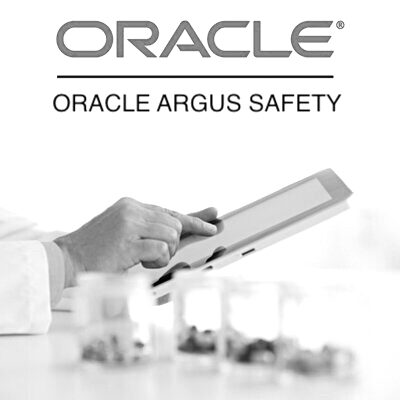Table of Contents
- Navigating Pharmacovigilance Trends in 2024: Enhancing Drug Safety in a Dynamic Landscape
- Introduction
- Conclusion
- Oracle Argus Safety Essentials
- Oracle Argus Safety Essentials + Console
- Oracle Argus Safety – Live Online
- Oracle Argus Safety + Console – Live Online
- Oracle Empirica Signal
- Oracle Empirica Signal – Live Online
- Diploma in Pharmacovigilance
- Argus Safety – Business Configuration and Administration
Navigating Pharmacovigilance Trends in 2024: Enhancing Drug Safety in a Dynamic Landscape
Introduction
Navigating Pharmacovigilance Trends in 2024. In the realm of healthcare, pharmacovigilance stands as a cornerstone for ensuring the safety and efficacy of pharmaceutical products. With rapid advancements in medical research, technology, and regulatory frameworks, the pharmacovigilance landscape is continuously evolving. As we step into 2024, it’s crucial to explore the emerging trends shaping pharmacovigilance practices and their implications for drug safety.
Integration of Artificial Intelligence (AI) and Machine Learning (ML):
Harnessing the power of AI and ML has become instrumental in enhancing pharmacovigilance activities. AI algorithms can swiftly analyze vast volumes of data from diverse sources, including electronic health records, social media, and clinical trials, to detect potential adverse drug reactions (ADRs) and signal safety concerns. ML models can also predict patient outcomes and identify patterns that might not be apparent through traditional methods. In 2024, we anticipate a significant surge in AI-driven pharmacovigilance solutions, offering more efficient and proactive approaches to monitoring drug safety.
Real-world Evidence (RWE) and Big Data Analytics:
The utilization of real-world data (RWD) and RWE is gaining momentum in pharmacovigilance. By tapping into data generated from routine clinical practice, patient registries, and wearable devices, stakeholders can glean insights into drug safety profiles in diverse patient populations and real-world settings. Big data analytics play a pivotal role in processing and analyzing this vast trove of information, enabling timely detection of safety signals and facilitating risk management strategies. In 2024, we foresee a continued emphasis on leveraging RWE to complement traditional pharmacovigilance methods and enhance post-market surveillance efforts.
Enhanced Regulatory Oversight:
Regulatory agencies worldwide are bolstering their pharmacovigilance frameworks to adapt to evolving challenges and ensure patient safety. In 2024, we anticipate stricter regulations governing pharmacovigilance practices, including mandatory reporting requirements, expedited signal detection processes, and enhanced transparency initiatives. Regulatory bodies may also implement novel approaches, such as blockchain technology, to improve data integrity and traceability in pharmacovigilance activities. Industry stakeholders must stay abreast of these regulatory developments and proactively align their pharmacovigilance strategies to remain compliant and uphold patient welfare.
Patient-Centric Pharmacovigilance:
Empowering patients to actively participate in pharmacovigilance initiatives is emerging as a pivotal trend in 2024. Patient-reported outcomes (PROs), social media monitoring, and patient engagement platforms are being increasingly integrated into pharmacovigilance frameworks to capture patient experiences and perceptions regarding medication safety. By soliciting patient feedback and insights, stakeholders can gain a comprehensive understanding of drug tolerability, effectiveness, and adherence in real-world scenarios. Embracing a patient-centric approach not only enhances pharmacovigilance efforts but also fosters trust and transparency within the healthcare ecosystem.
Global Collaboration and Data Sharing:
Collaboration among international stakeholders is essential for addressing global health challenges and improving pharmacovigilance outcomes. In 2024, we anticipate greater emphasis on cross-border collaboration, data sharing, and harmonization of pharmacovigilance practices among regulatory agencies, pharmaceutical companies, healthcare providers, and academic institutions. Initiatives such as the International Coalition of Medicines Regulatory Authorities (ICMRA) and the World Health Organization’s (WHO) Global Vaccine Safety Blueprint exemplify concerted efforts to promote information exchange and strengthen pharmacovigilance infrastructure on a global scale.
Conclusion
As we navigate the pharmacovigilance landscape in 2024, it’s evident that innovation, collaboration, and patient-centricity are driving forces shaping the future of drug safety. By embracing cutting-edge technologies, leveraging real-world evidence, adhering to stringent regulatory standards, engaging patients as active participants, and fostering global collaboration, stakeholders can enhance pharmacovigilance practices and safeguard public health. As we embrace these trends, let us remain steadfast in our commitment to advancing pharmacovigilance and ensuring the safe and effective use of medications for generations to come.
This completes our post on Navigating Pharmacovigilance Trends in 2024.
You may be interested in…
-
 eLearning + software
eLearning + softwareOracle Argus Safety Essentials
$599.00 -
 eLearning + software
eLearning + softwareOracle Argus Safety Essentials + Console
$799.00 -
 Live Online
Live OnlineOracle Argus Safety – Live Online
$999.00 -
 Live Online
Live OnlineOracle Argus Safety + Console – Live Online
$999.00 -
 eLearning + software
eLearning + softwareOracle Empirica Signal
$599.00 -
 Live Online
Live OnlineOracle Empirica Signal – Live Online
$999.00 -
 eLearning + software
eLearning + softwareDiploma in Pharmacovigilance
$799.00 -
 eLearning + software
eLearning + softwareArgus Safety – Business Configuration and Administration
$599.00

